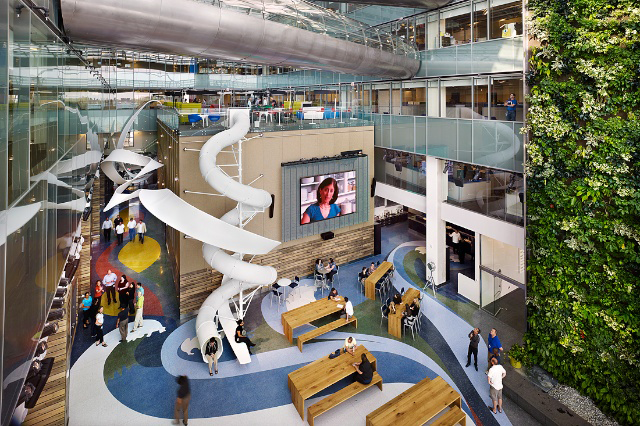In the majority of cases a workers environment, usually an office, is not catered towards maximising their potential health and well-being. This must change.
The World Health Organization describes wellness as “…a state of complete physical, mental, and social well-being, and not merely the absence of disease or infirmity.“. Do most desk workers fall into this category? Unsurprisingly they do not; a new study claims sitting at a desk all day causes early death.
Wellness is critical to ensure productive, creative, happy employees. Most office spaces do not facilitate this, prioritising cost instead. Yet companies forget that the office space will directly impact productivity, resulting in greater value long term. On average, happiness makes people 12% more productive. So how can the future office be improved?
Air
Many ‘9 to 5’ers are very familiar with the deep, white noised hum and sterile breeze of the office’s air conditioning. However to increase happiness for office workers it may be time to scrap the climate control and throw open the windows. Research tells us in 90 percent of the population, fresh air and nature increases our energy.
Space
Creativity is principal for every business to stay successful. It’s a competitive world. A cramped office will reduce worker productivity so creative, fun spaces within the office are becoming all the more common. Google has some of the best offices on the planet that now include a ton of slides. Yes, slides.
Obviously most offices have height limitations for the installation of an indoor slide (despite how incredible one would be), but companies can definitely do more to adopt the values embraced by Google et al here.
Light
Poor office lighting can be a safety hazard, affect quality of work, and impact health. To improve employee well-being, the use of lighting must be reviewed.
When you think of ‘poor lighting’, most often you’ll imagine a dingy, dimly lit room with little natural light. Whilst this is true, the majority of modern offices don’t have this problem. They are well lit. The problem lies with the type of lighting used – cold fluorescents. These lights do not replicate the broad-spectrum light we get from the sun.
Good office lighting design will include a wide range of different light sources, reflecting natural light first and foremost, using light-toned walls, mirrors and avoiding dark carpets. Variations of colour temperature from artificial light to cover a greater portion of the visible-light spectrum will lead to happier employees. We need a combination of bulbs that create fluorescent light producing a cool glow and incandescent light that output a warmer glow to mimic sunlight.
Air + Space + Light = Positive Workplace
By swapping the air conditioning out for nature’s fresh air, allowing room for creative spaces, and applying innovative lighting design, the future modern office will be transformed into a harmonious and positive workplace designed to maximise employee well-being. Focus on these core elements first and the rest will follow.
